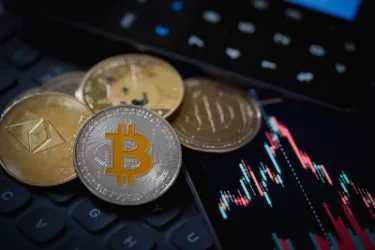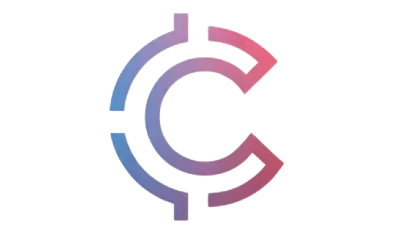The Basics of Blockchain: A Simple Explanation for Newbies

In the past decade, blockchain technology has taken the world by storm. Initially introduced as the underlying technology behind cryptocurrencies like Bitcoin, blockchain has proven to have far-reaching potential beyond digital currencies. But for many people, the term “blockchain” still seems like a complex and unfamiliar concept.
If you’re a newbie, don’t worry. This article will break down the basics of blockchain in simple terms, so you can understand what it is, how it works, and why it matters. By the end of this article, you’ll be able to explain blockchain technology to someone else with ease!
What is Blockchain?
In simple terms, blockchain is a decentralized digital ledger or database that records transactions across multiple computers. It is designed to be secure, transparent, and tamper-proof, making it ideal for storing valuable information like financial transactions, contracts, and even voting results.
Imagine you have a notebook where you write down everything you do—your purchases, transactions, agreements, and more. This notebook is special because every time you write something down, it’s visible to everyone, and once it’s written, it cannot be changed or erased. That’s what blockchain is like a public, digital notebook where transactions are recorded and verified in a way that ensures the integrity and security of the data.
How Does Blockchain Work?
At its core, blockchain technology works by recording transactions in “blocks,” which are then linked together to form a chain of information (hence the name “blockchain”). Here’s a step-by-step explanation of how blockchain works:
1. Transaction Initiation
Let’s say you want to send money to someone. Instead of relying on a bank or a third-party intermediary, you initiate a transaction directly with the recipient. This transaction is then broadcast to a network of computers (called nodes).
2. Verification Process
Once the transaction is initiated, it needs to be verified. This is done by miners or validators within the blockchain network. These computers verify the transaction by checking if the sender has enough balance, whether the transaction is legitimate, and so on.
In the case of proof-of-work (a consensus mechanism used by many blockchains like Bitcoin), miners solve complex mathematical puzzles to verify the transaction. This process ensures that the transaction is valid and prevents fraud, such as double-spending.
3. Adding the Transaction to a Block
Once the transaction is verified, it’s grouped together with other transactions to form a “block.” This block contains transaction details, such as the sender’s and receiver’s addresses, the amount sent, and the timestamp.
4. Consensus and Confirmation
After the block is formed, the blockchain network must reach a consensus to confirm the block’s validity. Depending on the blockchain protocol, this could involve processes like proof-of-work, proof-of-stake, or other consensus algorithms.
Once consensus is reached, the block is added to the blockchain, and the transaction is considered complete. The information is now stored permanently and cannot be altered or deleted.
5. Blockchain Update
The blockchain ledger is updated across all the computers in the network, ensuring that everyone has the same copy of the transactions. This makes blockchain transparent everyone can see the transactions, but no one can change them.
Why is Blockchain So Special?
Blockchain is not just another database or technology. It has a few key features that set it apart from traditional systems:
1. Decentralization
Unlike traditional databases, which are usually controlled by a central authority (like a bank or government), blockchain is decentralized. This means that no single entity has control over the data. Instead, the data is distributed across a network of computers, which ensures that the information is secure and transparent.
2. Transparency
Every transaction recorded on a blockchain is visible to all participants in the network. This ensures that everyone can see the same information, promoting trust and accountability. In other words, you can always verify the authenticity of transactions without needing a third-party intermediary.
3. Security
Blockchain uses cryptography to secure transactions, making it extremely difficult to alter or hack the data. Each block in the chain contains a unique cryptographic hash, which links it to the previous block, creating an unbreakable chain of information. Once data is added to the blockchain, it’s almost impossible to change without the consensus of the entire network.
4. Immutability
One of the most powerful features of blockchain is immutability once information is added to the blockchain, it cannot be changed or deleted. This makes it a secure way to store data that must remain unchanged, such as legal contracts or financial transactions.
What Can Blockchain Be Used For?
While blockchain is most commonly associated with cryptocurrencies like Bitcoin, its potential applications extend far beyond digital money. Here are a few areas where blockchain is already making a significant impact:
1. Cryptocurrencies
The first and most well-known use of blockchain is in cryptocurrencies like Bitcoin and Ethereum. These digital currencies rely on blockchain technology to record and verify transactions securely, without the need for a central authority like a bank.
2. Supply Chain Management
Blockchain can be used to improve transparency and traceability in supply chains. By recording every step of a product’s journey, from manufacturing to delivery, blockchain can help companies ensure that their products are authentic, ethically sourced, and free from fraud.
For example, if a company wants to prove that their products are made using sustainable materials, they can use blockchain to provide a verifiable record of the supply chain, ensuring that all stakeholders can trace the product’s origin.
3. Healthcare
In the healthcare industry, blockchain can be used to store patient records securely and ensure that they are accessible only by authorized individuals. By using blockchain, healthcare providers can ensure that patient data is accurate, up-to-date, and protected from tampering or unauthorized access.
4. Voting Systems
Blockchain has the potential to revolutionize electoral systems by providing a secure, tamper-proof voting system. Using blockchain, votes could be securely cast and verified, making elections more transparent and reducing the risk of fraud.
5. Real Estate
In the real estate industry, blockchain can be used to streamline property transactions, ensuring that ownership records are secure and transparent. Blockchain can also reduce the need for intermediaries, such as brokers and lawyers, simplifying the buying and selling process.
6. Smart Contracts
A smart contract is a self-executing contract where the terms of the agreement are written directly into lines of code. Blockchain technology enables smart contracts to be executed automatically when predefined conditions are met. This eliminates the need for intermediaries, reduces costs, and ensures that contracts are executed fairly and transparently.
Benefits of Blockchain Technology
Blockchain offers several advantages over traditional systems, especially when it comes to security, efficiency, and trust. Here are some key benefits:
1. Reduced Fraud
Since blockchain transactions are verified by multiple computers in the network, the risk of fraud is significantly reduced. Once a transaction is recorded, it cannot be altered, which makes it difficult for malicious actors to manipulate data.
2. Faster Transactions
Blockchain allows for peer-to-peer transactions without the need for intermediaries like banks. This can speed up the transaction process, especially for cross-border payments, which traditionally take several days to complete.
3. Cost Savings
By removing intermediaries, blockchain can reduce transaction costs, making it a more efficient and cost-effective system for businesses and consumers alike.
4. Greater Transparency
Blockchain’s transparency means that everyone in the network can access the same information, promoting trust and accountability. This is especially important in industries like supply chain management, where transparency is key to preventing fraud and ensuring quality.
5. Increased Security
With its use of cryptographic techniques, blockchain is one of the most secure ways to store and transmit data. Each transaction is encrypted and linked to the previous one, creating an immutable record that is difficult to tamper with.
Challenges of Blockchain Technology
While blockchain has enormous potential, it also faces several challenges:
1. Scalability Issues
As more transactions are added to the blockchain, the network can become slower and more expensive to operate. This is especially true for blockchains that use proof-of-work consensus algorithms, which require a lot of computational power.
2. Regulatory Uncertainty
Since blockchain is a relatively new technology, governments and regulators are still figuring out how to deal with it. This regulatory uncertainty can create challenges for businesses that want to adopt blockchain solutions.
3. Energy Consumption
Some blockchain networks, such as Bitcoin, require significant energy to operate due to the mining process. This has raised concerns about the environmental impact of blockchain technology.
Conclusion
Blockchain technology has the potential to transform industries and revolutionize the way we store and share data. From cryptocurrencies to healthcare, supply chains, and voting systems, blockchain is proving to be more than just a tool for digital money. Its security, transparency, and decentralization make it an ideal solution for a variety of applications.
While challenges remain, the future of blockchain technology is bright. As adoption increases and technological advancements continue, we can expect to see even more innovative uses of blockchain in the coming years.
